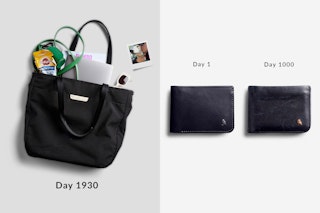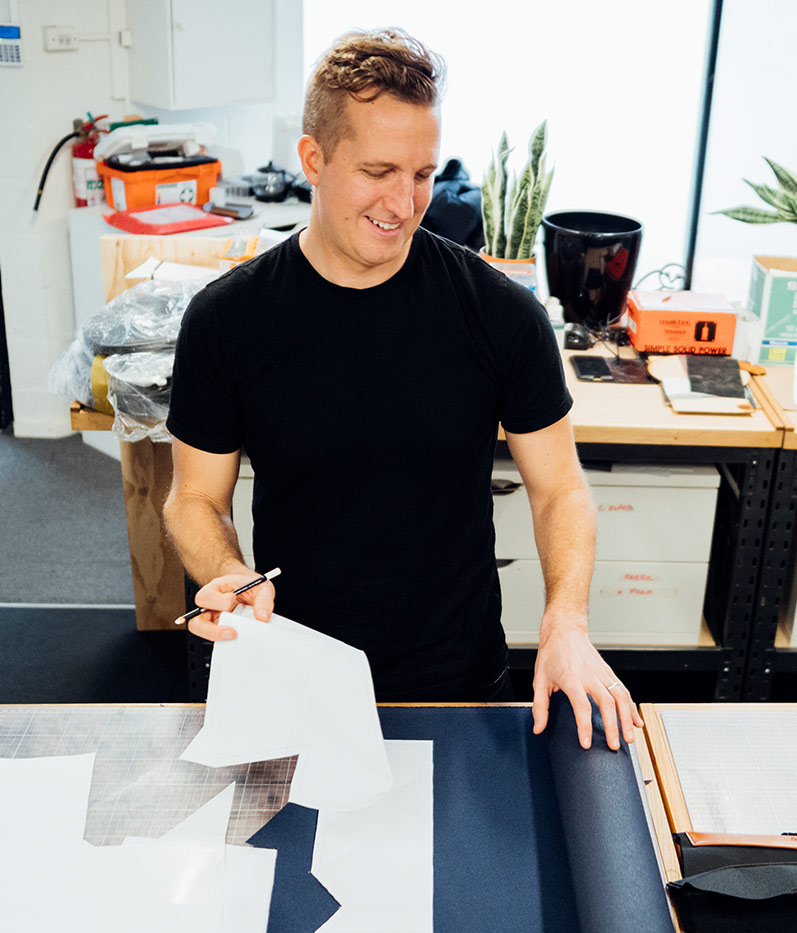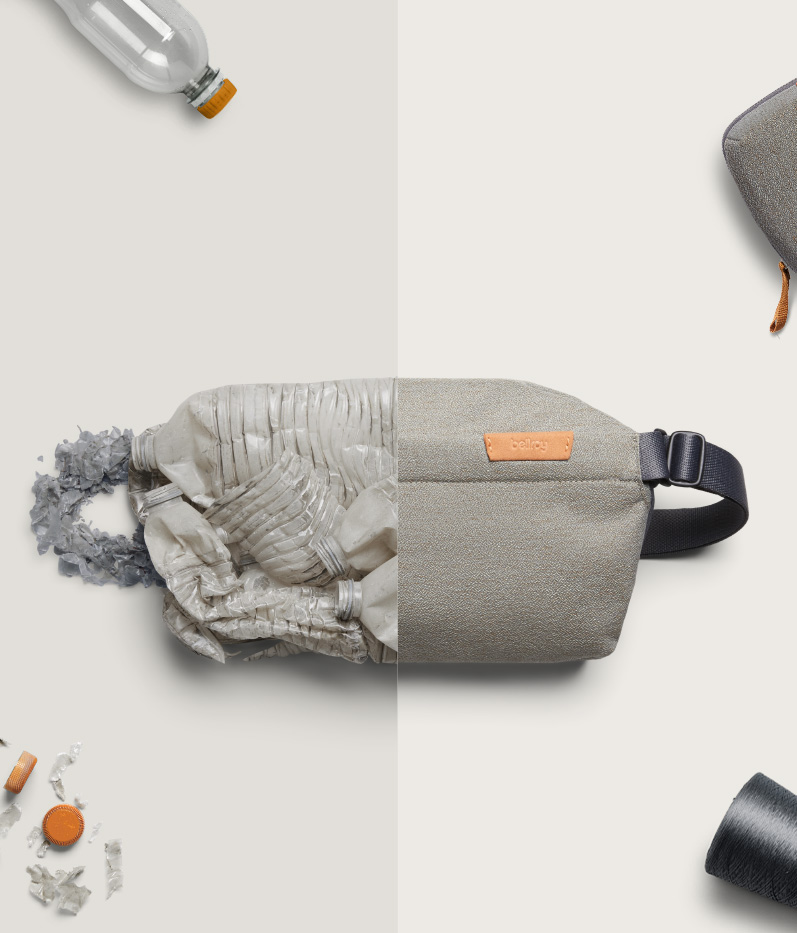Design
Design that lives on
Our design thinking goes way beyond the product you hold in your hands. Here, our design team explains how.
We accept:

A warranty seems like a straightforward thing – an assurance given by a brand that protects the consumer for a set period of time. A commitment to repairing or replacing their product for the timeframe given, as a way of putting a customer’s mind at ease at their time of purchase. And that is important. But, we want it to do more than that. We want it to be a source of information about the products, their design and manufacturing quality. And, to set (realistic!) expectations on the intended use and life of our products.

We consider a warranty as a calibrated (and tested) assessment of a product’s expected lifespan. In other words, how long the materials, hardware, coatings and components in our products are predicted to last within their expected conditions and frequency of use. Those assessments will be different for a wallet that’s being handled, open and closed, rubbed against your jeans pockets and so on, multiple times a day, every day. Versus, say, a travel bag that might be used a few times a year but has to contend with sudden climate changes and airport stresses.
Long – especially ‘lifetime’ warranties – sound great, but they come with questions: what will be an acceptable warranty claim after 10 or 20 years’ worth of use? Will the warranty still be honored if you purchased the product secondhand? Will the product still exist when you need a replacement? Will the company itself be around to honor it? Whose ‘lifetime’ are we referring to? And how long is your original product actually expected to last, before you need to claim a replacement and send the original to landfill? Our warranties cover the product from the date of first purchase (as long as that can be shown) for the duration of the warranty period. We – hand on heart – expect our products to last that long and even longer. Making durable products that you’ll replace less frequently is our top environmental goal, and we’re committed to it. But nothing is ever perfect, so if it falters, we’ll replace it. Repairability is an excellent next step – which we are actively exploring.

We love a venn diagram, and for us, there’s a ‘good’ level of intersection between durability and innovation. If a product is genuinely made to last our lifetime, it would need to be made with the oldest, most tested and proven, likely heaviest and bulkiest, materials possible. We couldn’t innovate as much as we do, if we had to have decades worth of data on a fabric or component in order to use it. And yet, we never want to innovate so hard that we lose confidence in durability and fitness for purpose. In other words, we want enough to be ‘known’ so we can say it works and lasts… but not so much that we can’t make use of the latest technologies where they make things better. Which is why every experiment of ours goes through a lot of testing before we deem it viable (or not).
We talk a lot about making products that last. Our number one environmental goal is "to make products that can be used and loved for as long as possible”. We also often talk about day 1000 as a bit of a milestone for our products – we reckon they’re even better after 1000 days, having been shaped by the people using them every day. With our product offering growing steadily from leather wallets when we started, to travel bags now and more to come, it’s time for us to update what "as long as possible" means in terms of our product warranties.
We have now updated our warranty policy from 3 years across all products to:
3 years for wallets, pouches, tech accessories and key carry. (1095 days.)
6 years for all bags. (2190 days.)
10 years for luggage. (3650 days.)
We believe they can last much longer, but it would be disingenuous for us to guarantee it.
It’s a balancing act (another venn diagram?) between:

We want our policy to be as simple as possible; no one loves the fine print. Naturally, there are a couple of conditions which should feel like common sense.
This is step one. We’re constantly working on what ‘better’ looks like, and finding new ways to make progress. We wanted to get this update to our customers as soon as we could, rather than waiting for status ‘perfect’ (which never actually arrives). And we look forward to bringing more updates as our product range expands, and our learnings develop.
Visit customer support >
Our design thinking goes way beyond the product you hold in your hands. Here, our design team explains how.

Is leather evil? Is plastic bad? We recently hosted a panel of material innovators, to discuss how the path to greater sustainability is paved with compromise and creativity.

Leathers are not created equal. We've invested time, money and plenty of hours into sourcing the best leathers we can, and here's some of what we know about them.